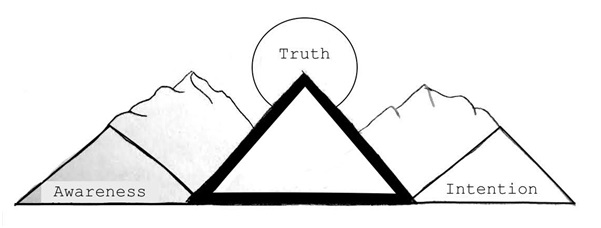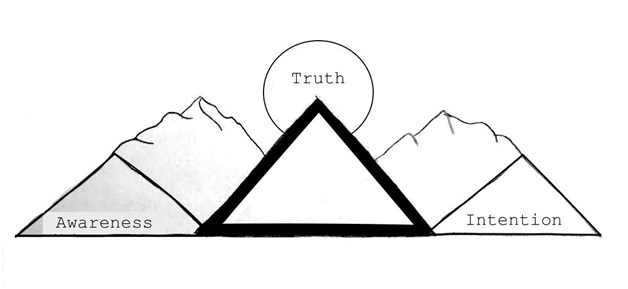A Coaching Model Created by Madison Clements
(Life Coach, UNITED STATES)
Introduction
As a child of two real estate agents with a passion for ‘flipping’ houses, I moved around with my family a lot causing me to switch school districts often. Through the continual process of making new friends and reestablishing myself in a new environment, I was repeatedly cultivating a sense of belonging over and over. In the long term, these life experiences taught me to be a strong self-initiator who strives for genuine connection with strangers. However, as a child, it taught me to choose the path that produced the quickest and easiest sense of belonging. It became commonplace to prioritize what I “should” do or say to be “good enough” to “earn” the approval, affection, and love of those around me, rather than being my true self.
My unique coaching practice and coaching model are meant for those who are tired of feeling dissatisfied and unfulfilled in their day to day life and their close relationships. While working with me, clients will have the opportunity to shift from feeling unaligned in their connection to themself and others to then feeling enriched by a deep, meaningful connection to their most authentic self and others around them. This will require the client to have a willingness to get vulnerable, to challenge their own thoughts, to let go of others’ expectations, and to get curious about their own needs. The process of feeling as though you belong in the presence of others begins with the first feeling as though you belong in your own presence.
 Raise Awareness. Discover Truth. Set Intention.
Raise Awareness. Discover Truth. Set Intention.
Coaching Model
Process
The coaching model I have built is called “The Mountainous Range of Belonging”. The general idea is to recognize that it is only through stepping into uncomfortable territory and pushing personal limits, i.e. climbing a mountain, that the client will raise awareness around their circumstances, discover what truly feels best for them, and set concrete intentions to move forward with utilizing that true awareness as a tool of guidance toward belonging. It is through this process that the client will become familiar with themselves, gain trust in their identity, and begin to shape their environment and relationships around their true self to create a grounded foundation of belonging.
Structure
This framework will be referenced when the client has cultivated new awareness around their present situation, discovered a truth about themselves, or set a new intention that aligns them with their desired path. The structure of each coaching session will be flexible and guided by the client. This model can be considered as a resource or tool to utilize when I, the coach, notice and opportunity for growth or the client feels ready to dive deeper with self-initiative. To further enforce the essence of challenging ourselves, there will be the option of doing a coaching session while on a hike. This coaching setting could provide the client a chance to understand how the model is represented in both a physical and emotional sense. Finding a connection between the two can be a powerful skill to tap into on their journey.
Awareness
One of the ICF core competencies within a coaching relationship is evoking awareness. I believe this to be one of the most crucial competencies of coaching. Through working with my clients, I will focus on guiding the client to gain awareness of that which feels good and does not feel good to them personally. We will also explore their story/circumstances, what changes they desire, the difference between the two, and what obstacles they face in bridging the gap. Often, it is through this exploration that false beliefs, adverse behavioral patterns, and physical or emotional bodily reactions come to the forefront of the coaching conversation. Here, we will discover the client’s true values, bring current emotions to light, and work with the balance between acceptance and learning how to use emotions as a guide for re-aligning with their values.
Truth
Upon the recognition of false beliefs, adverse behavioral patterns, and physical and/or emotional bodily reactions to the current situation, clients will be called to consider what alternative feels best for them. This typically forms determined needs, wants, and aspirations. Since these are ever-changing, a key concept will be the client recognition that an individual’s truth is ever-changing and thus, must be re-examined frequently. Together, the client and I will discover what the true beliefs are, what is currently working, and what recognizable bodily cues can be identified to lead the client toward growth.
Intention
Utilizing this information, we begin to rewrite the narrative of their story and figure out what action steps need to take place to facilitate self-growth. Through this process, clients learn to plan around foreseeable obstacles, work alongside the coach for support, and build resiliency in pursuit of a truer life that feels worth striving for.

Conclusion
Each component of this model is just as important as the one that follows it. Without one another, the mountain crumbles and becomes a valley. Everyone’s path is unique and it is not set before us. Client’s may find themselves dancing between all three of these components as they navigate their authentic path to belonging. It goes without saying that the ability to remain flexible and follow the client’s lead is of utmost importance within any coaching practice, but especially within my coaching model for belonging because of the focus on authenticity.
This above all: to thine own self be true, And it must follow, as the night the day, Thou canst not then be false to any man. – William Shakespeare